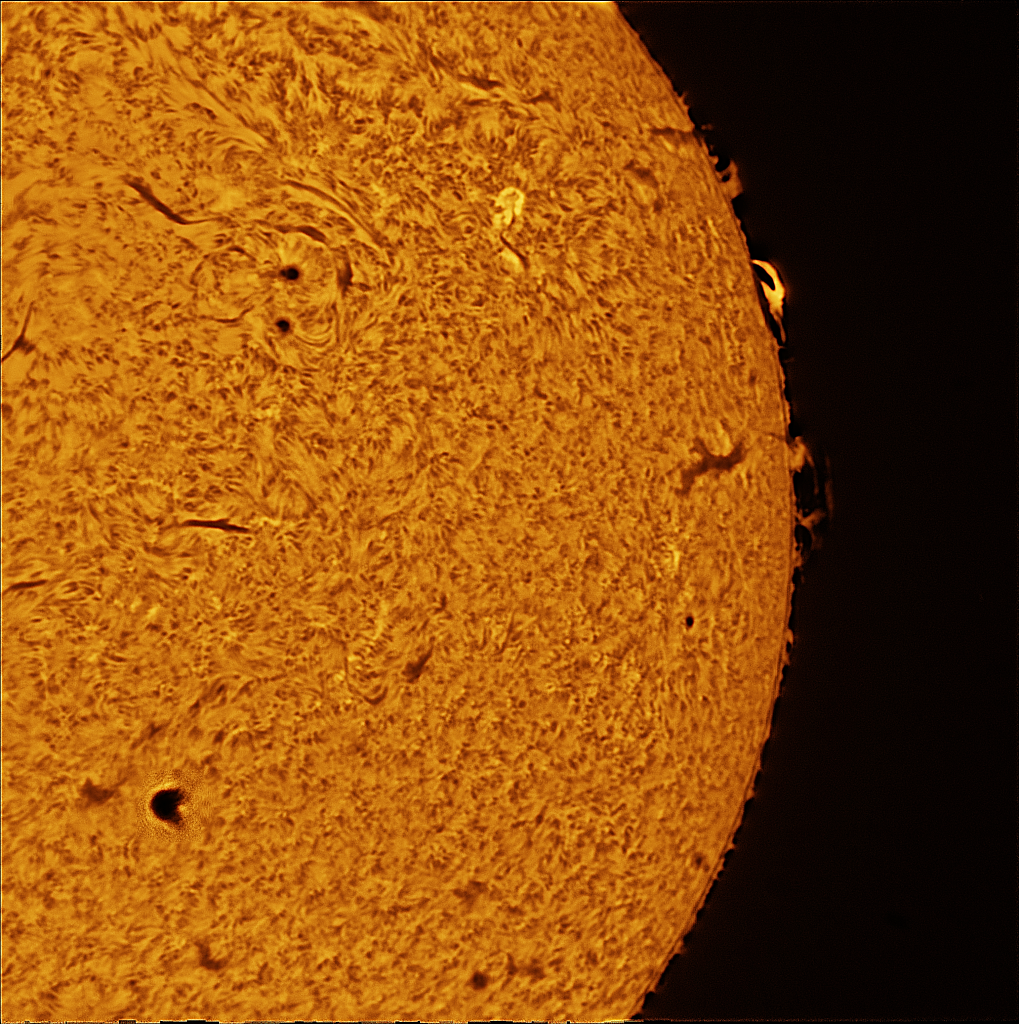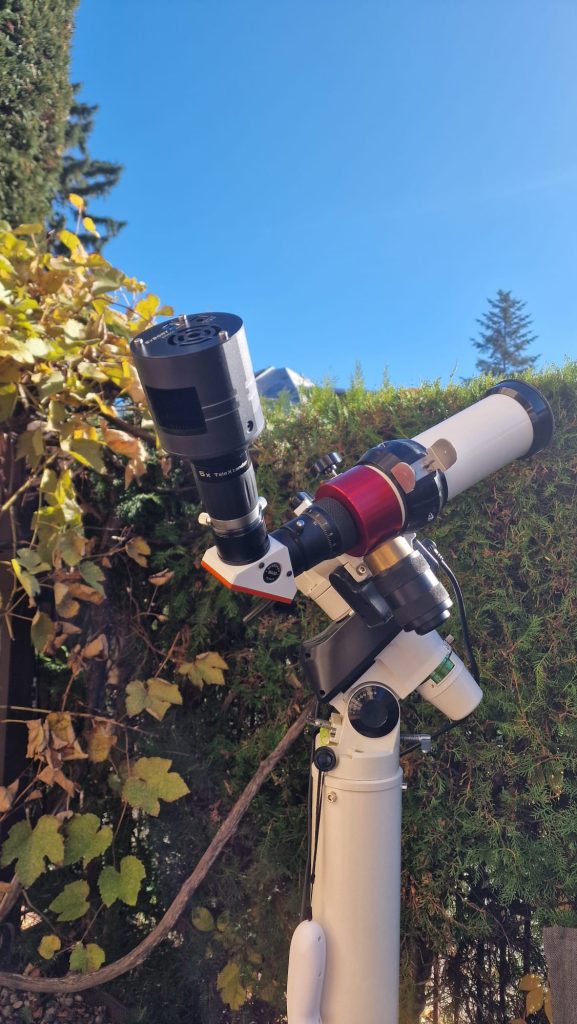Soarele explorat cu luneta solară LUNT 50/350 LS50THa/B600PT al Astroclubului București de Răzvan Orbu

Curs de astronomie al Astroclubului București, 2025-2026 (a 57-a ediție)
octombrie 27, 2025Data publicării: 27 octombrie 2025
Astroclubul București a fost invitat de domnul Adrian Bănuță la standul revistei „Știință și Tehnică” cu ocazia festivalului West Side Hallo Fest. Intervalul orar era fixat pentru vineri 24.10.2025 între orele 13 și 17 astfel că aveam puține șanse să prezentăm ceva notabil cu un telescop obișnuit.
A apărut ideea utilizării lunetei solare LUNT 50/350 LS50THa/B600PT.
Pentru a avea succes cu ea, am hotărât să o iau la mine și să învâț să o utilizez. Prima duminică însorită mi-a oferit acest prilej și rezultatele au fost deja prezentate într-un articlor anterior.
A venit și ziua festivalului, vremea inițial a fost descurajatoare, dar de la orele 14 Soarele s-a eliberat din nori și am avut ocazia să prezentăm publicului imagini interesante cu cromosfera soarelui. Echipa Astroclubului București, compusă din domnul Marian Naiman, doamna Ancuța Hîrsu și subsemnatul a invitat publicul curios să se uite prin această lunetă.
Profitând de vremea frumoasă din data de 25.10.2025 am scos din nou telescopul solar în grădină și am încercat să îl împrietenesc cu un Barlow 5x. Din documentare rezulta că este o configurație extremă, dar am hotărît să încerc. Nu a fost simplu, chiar și vizual au fost unele dificultăți de focalizare. Barlow-ul a premis întradervăr să observ protuberanțele solare mai bine, dar tulburențele atmosferice diminuau farmecul lor. A urmat pasul următor, în care am atașat camera SV605C. Intrarea în focus s-a făcut repede, surpinzător de repede, după care am început cu ajutorul controlerului monturii să explorez marginea discului solar. Am găsit o zonă inetersantă și am realizat capturi .FITS și .SER. Procesarea inițială am făcut-o în Pixinsight, rezultatul era mai bun decât cel dinainte cu o săptămână, dar nu era suficient de bun. Urmând recomandările colegilor mai experimentați, domnul Cristian-Mircea Stancu și domnul Dănuț Ionescu am reprocesat fișierul .SER în Autostakkert și apoi am finalizat fotografia în Pixinsight. O cosmetizare cu un program comun a dus la rezultatul pe care îl vedeți. Am atașat și o poză cu setup-ul, fără cabluri.
The Sun Explored with the LUNT 50/350 LS50THa/B600PT Solar Telescope of the Bucharest Astroclub
The Bucharest Astroclub was invited by mr. Adrian Bănuță to the stand of the “Știință și Tehnică” magazine for the West Side Hallo Fest festival. The time slot was set for the evening of 10/24/2025, between 1:00 PM and 5:00 PM, so we had little chance of presenting anything noteworthy with a regular telescope.
The idea of using the LUNT 50/350 LS50THa/B600PT solar telescope came up. To be successful with it, I decided to take it home and learn how to use it. The first sunny Sunday gave me this opportunity, and the results were already presented in a previous article.
The day of the festival arrived; the weather was initially discouraging, but from 2:00 PM the sun broke free from the clouds and we had the chance to show the public interesting images of the sun’s chromosphere. The Bucharest Astroclub team, consisting of mr. Marian Naiman, mrs. Ancuța Hîrșu, and the undersigned, invited the curious public to look through this telescope.
Taking advantage of the beautiful weather on 10/25/2025, I took the solar telescope out into the garden again and tried to pair it with a 5x Barlow lens. My research indicated this was an extreme configuration, but I decided to try. It wasn’t simple; even visually there were some focusing difficulties. The Barlow did indeed allow me to see the solar prominences better, but atmospheric turbulence diminished their charm.
The next step followed, in which I attached the SV605C camera. Achieving focus was quick, surprisingly quick, after which I began using the mount’s controller to explore the edge of the solar disk. I found an interesting area and captured .FITS and .SER files. I did the initial processing in Pixinsight; the result was better than the one from the week before, but it wasn’t good enough. Following the recommendations of more experienced colleagues, mr. Cristian-Mircea Stancu and mr. Dănuț Ionescu, I reprocessed the .SER file in Autostakkert and then finalized the photo in Pixinsight. Some touch-ups with a common program led to the result you see. I have also attached a picture of the setup, without cables.
Autor text și foto: Răzvan Orbu, Astroclubul București, România.





